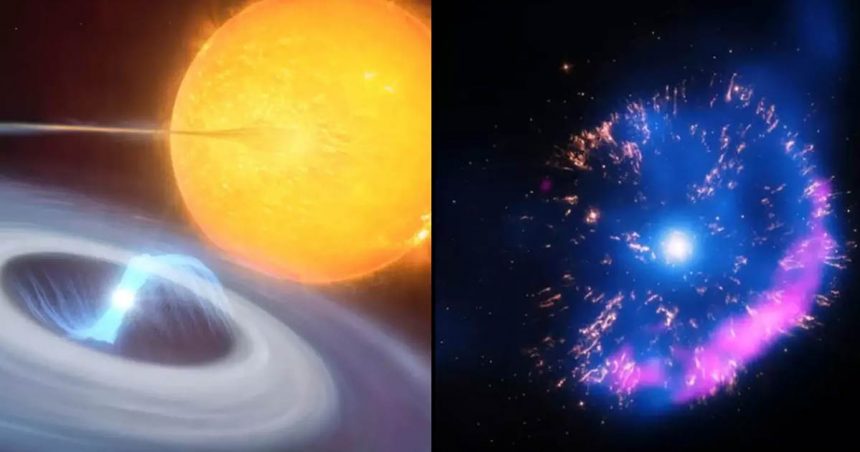Prepare to witness a rare celestial event this summer as the binary star system T Coronae Borealis is expected to undergo a nova explosion, a phenomenon not seen since 1946. Learn more about this extraordinary event and how you can experience it.
What is a Nova Explosion?
A nova explosion occurs in a binary star system where a white dwarf and a red giant orbit closely. In the case of T Coronae Borealis, the white dwarf strips hydrogen from the red giant, leading to a buildup of gas on the white dwarf’s surface and eventually triggering a thermonuclear explosion. Unlike a supernova, a nova explosion does not destroy the white dwarf but instead releases accumulated material into space in a brilliant flash.
Read More: Professor Brian Cox Shut Down Flat Earth Theory With Simple Response, And It Was Awesome.
The Blaze Star: T Coronae Borealis
Situated in the Northern Crown constellation, approximately 3,000 light-years from Earth, T Coronae Borealis (T CrB) is known as the “Blaze Star.” Historical records indicate its last visible nova explosion in 1946, hinting at a possible upcoming event based on recent behavior.
Nova Explosion Timing and Visibility
Scientists anticipate the nova explosion to happen anytime between now and September. If it occurs, it will be visible to the naked eye for about a week, providing a rare opportunity for astronomers, both professional and amateur, to witness it firsthand. Dr. Rebekah Hounsell from NASA emphasized the significance of this event, stating it will inspire new astronomers and offer a cosmic experience for all.
Finding T Coronae Borealis
To locate T CrB, look for the Northern Crown constellation west of Hercules during clear summer nights. By drawing a line between the prominent stars Arcturus and Vega, one can identify Hercules and the Northern Crown easily.
Scientific Importance and Citizen Participation
The nova explosion of T Coronae Borealis is not just a spectacle but also holds significant scientific value. Dr. Elizabeth Hays from NASA Goddard highlighted the role of citizen scientists and space enthusiasts in observing and contributing real-time data through social media and alerts, aiding scientific research.
Read More: If a ‘Planet Killer’ Astroid is Going to Hit Earth, This is How NASA Will Warn The World

Advancements in technology since 1946 have enhanced our ability to study such events. Instruments like NASA’s Fermi Gamma-ray Space Telescope, the James Webb Space Telescope, and other telescopes are ready to capture detailed data across various wavelengths, providing invaluable insights into nova explosions.
The Unpredictable Nature of a Nova Explosion
Despite predictions, the nova explosion’s exact timing and behavior are uncertain. Dr. Koji Mukai from NASA Goddard noted the unpredictable nature of recurrent novae, adding an element of suspense to the anticipation surrounding T Coronae Borealis.
Conclusion
The potential nova explosion of T CrB is a reminder of the dynamic nature of our universe. Whether you are a seasoned astronomer or a curious observer, this event presents a rare chance to witness a cosmic phenomenon. Keep your eyes on the night sky this summer for a possible historic event.
Read More: NASA Discovered a Potentially Habitable Planet – An Alternative To Mars?
Sources
- “NASA, global astronomers await rare nova explosion.” Phys. Beth Ridgeway. June 7, 2024.
- “NASA, Global Astronomers Await Rare Nova Explosion.” NASA. Beth ridgeway. June 6, 2024.
- “Once-in-a-lifetime star ‘explosion’ set to light up the sky could happen any moment from now.” Lad Bible. Anish Vij. June 9, 2024.






